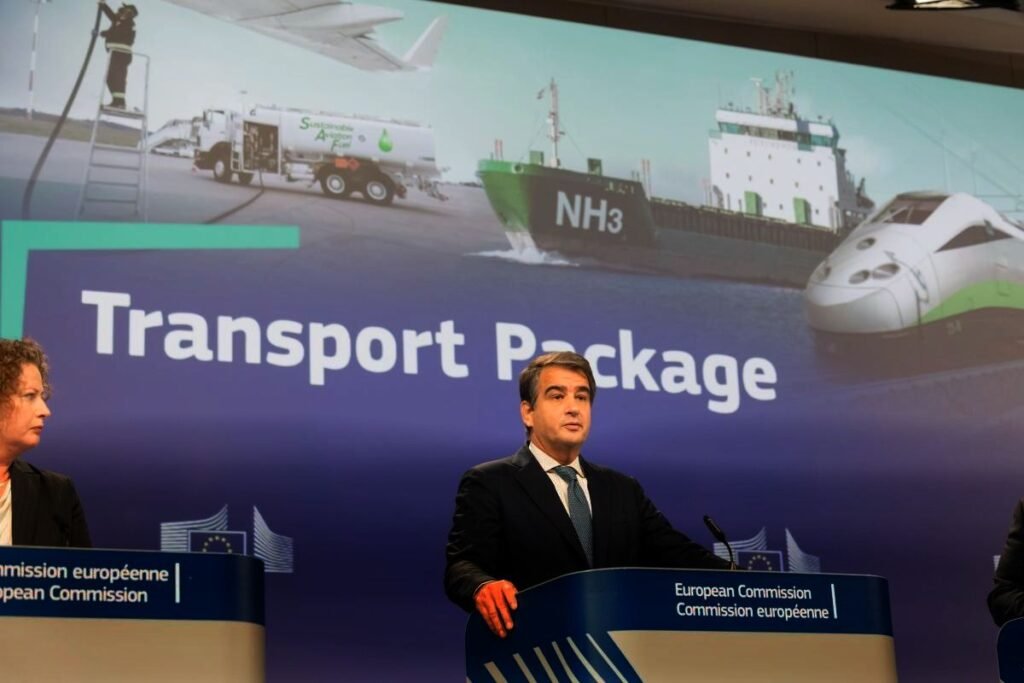A comprehensive transport package adopted by the Commission will accelerate the roll-out of Europe’s high-speed rail network and boost investment in renewable and low-carbon fuels for the aviation and waterborne sectors.

The new High-Speed Rail Action Plan sets out steps needed to create a faster, more interoperable and better-connected European network by 2040. It aims to cut journey times and make rail a more attractive alternative to short-haul air travel, thus increasing passenger numbers and boosting regional economies and tourism.
“High-speed rail is cohesion in action,” said EC vice-president Raffaele Fitto: “Improving travel times between capitals across Europe is a tangible and pragmatic result of our will to make Europe more united and more efficient. It will bring citizens closer together, make business easier throughout the EU, and contribute to what we call the ‘right to stay’.”
The plan foresees connecting major nodes at speeds of 200 km/h and above. Passengers will be able to travel from Berlin to Copenhagen in four hours instead of the current seven, and from Sofia to Athens in six hours instead of the current 13 hours and 40 minutes. New cross-border links will also enable faster and simpler journeys such as Paris–Lisbon via Madrid and improved connectivity between the Baltic capitals.
Four strands of action are proposed:
- Removing cross-border bottlenecks through binding timelines to be set by 2027 and the identification of options for higher speeds, including well-above 250 km/h when economically viable.
- Developing a coordinated financing strategy, including a strategic dialogue with Member States, industry and financiers leading to a High-Speed Rail Deal to mobilise the required investment.
- Improving the conditions for the rail industry and rail operators to invest, develop innovative solutions and operate competitively, including through a more attractive regulatory environment, by enhancing cross-border ticketing and booking systems, supporting a second-hand market for rolling stock, accelerating the deployment of the EU digital management systems, and fostering R&D and cooperation on scalable solutions.
- Strengthening EU-level governance, requiring infrastructure managers to coordinate on capacity for cross-border long-distance services, and facilitating standardisations and authorisations.
The second initiative, the Sustainable Transport Investment Plan (STIP), sets out a common approach to boost investment in renewable and low-carbon fuels focusing on aviation and waterborne transport.
By accelerating domestic production of biological and non-biological fuels, the Commission says Europe can reduce its dependence on imported fossil fuels, enhance the competitiveness of its industries and lead the clean-energy transition globally.
Key investment measures aiming to mobilise at least €2.9 billion through EU instruments by 2027 include:
- At least €2 billion for sustainable alternative fuels under InvestEU.
- €300 million through the European Hydrogen Bank to support hydrogen-based fuels for aviation and shipping.
- €446 million for synthetic aviation fuel and maritime fuel projects under the Innovation Fund.
- €133,5 million in fuels-related research and innovation under Horizon Europe.
Communication from the Commission: Connecting Europe through High-Speed Rail
Communication from the Commission: Sustainable Transport Investment Plan
European high-speed rail network Plan – questions and answers
Sustainable Transport Investment Plan – questions and answers